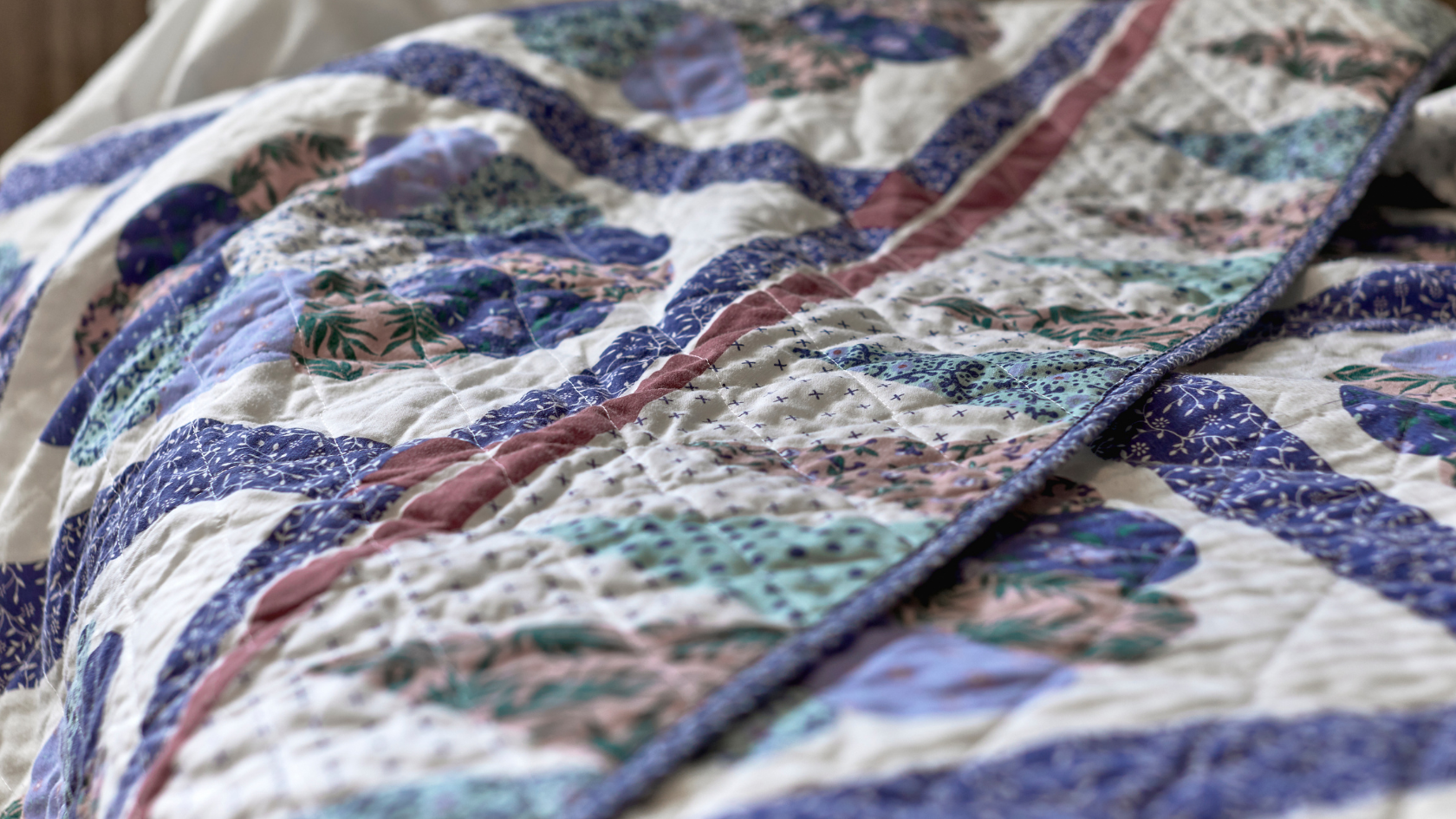Care Guide for Quilts: How To Wash and Store
February 28, 2023
Quilts are a beautiful and functional item that many people use to keep warm and cozy, especially during the colder months. However, with frequent use and exposure to dirt, dust, and other contaminants, quilts can quickly become dirty and worn out if not cared for correctly. In this guide, we'll provide you with practical tips on how to wash and store your quilts, so they remain in good condition and beautiful, ensuring your comfort and enjoyment for years to come.
WASH FREQUENCY
1-2 times a year
STORAGE METHOD
Fold
The Right Way To Wash Quilts
Quilts can be a beautiful addition to any bedding set, but they can also be difficult to wash. It is important to check the care label on the quilt to determine the appropriate washing method. Here are some general guidelines to help you wash quilts:
Machine Washing Quilts
- Check the care label to see if the quilt is machine washable.
- Pre-treat any stains on the quilt with a stain remover, following the instructions on the package.
- Place the quilt in the washing machine and add a small amount of mild detergent according to the package instructions.
- Use the delicate cycle on the washing machine and use cold water. Avoid hot water as it can shrink or damage the fabric.
- After the wash cycle is complete, run the quilt through an additional rinse cycle to ensure all the soap is removed.
- Remove the quilt from the washer and gently squeeze out the excess water. Avoid twisting or wringing the quilt as it can damage the fabric.
- Hang the quilt on a clothesline or lay it flat to air dry. Avoid using the dryer as it can shrink or damage the fabric.
If the care label indicates that the quilt should be hand washed, follow these steps:
- Fill a bathtub or large sink with cool or lukewarm water and add a small amount of mild detergent.
- Place the quilt in the water and gently scrub it with your hands. Pay attention to any stained areas, and use a stain remover if necessary.
- After washing, drain the water and rinse the quilt thoroughly with cool water to remove all the soap.
- Gently squeeze out the excess water. Avoid twisting or wringing the quilt as it can damage the fabric.
- Hang the quilt on a clothesline or lay it flat to air dry. Avoid using the dryer as it can shrink or damage the fabric.
If the care label on your quilt says "Dry Clean Only," take it to a professional dry cleaner. Do not attempt to wash it at home as it may damage the fabric or color. Dry cleaning is a special process that uses solvents to clean delicate fabrics without water. Professional dry cleaners have the knowledge and equipment to handle different types of fabrics and embellishments.
How Often To Wash Quilts
Quilts are typically used for decoration or on top of bedding, so they do not need to be washed as often as other bedding items. It's best to wash them 1-2 times a year or as needed if they become visibly soiled or stained.

The Right Way To Store Quilts
How to Fold Quilts
- Lay the quilt on a flat surface, with the patterned side facing down.
- Fold the quilt in half vertically, bringing the bottom edge to the top edge.
- Fold the quilt in half horizontally, bringing the right edge to the left edge.
- Fold the quilt in thirds horizontally, starting from the bottom.
- Store the quilt in a dry, cool place, preferably on a shelf or in a storage container.
Expert Advice for Maintaining The Quality Of Your Quilts
To keep quilts in top shape, there are several practical tips you can follow. First and foremost, always follow the care label instructions for washing and drying. It's essential to avoid using hot water when washing quilts, as it can shrink or damage the fabric. Similarly, avoid using the dryer as much as possible, as the heat can also damage the fabric. Instead, air dry the quilt by hanging it on a clothesline or laying it flat. Additionally, to prevent color bleeding, consider using salt as a mordant or dye-fixer for new quilts. It's also recommended to invest in mesh bags or a proper drying rack, especially for delicate quilts, to avoid wear and tear during the washing and drying process. Finally, when storing the quilt, make sure to fold it properly, as described above, and keep it in a dry, cool place, preferably on a shelf or in a storage container. By following these tips, you can keep your quilt looking beautiful and in top shape for years to come.
DISCLAIMER
Just a friendly reminder that this care guide for quilts only provides general advice. Your quilts may have specific care requirements based on its material, style, and manufacturer instructions, so always check the care label before washing or storing it. If you're unsure about anything, it's always best to consult a professional cleaner. Please note that the author of this guide is not responsible for any damages or losses resulting from the use or misuse of any information from this blog.
Want to share this?
